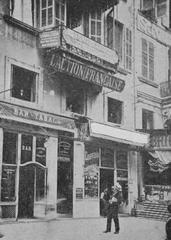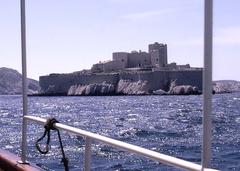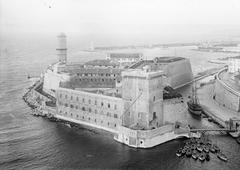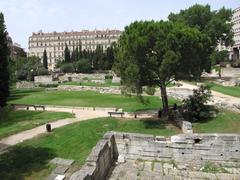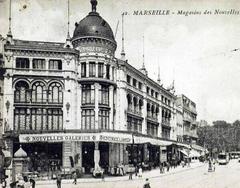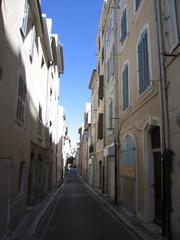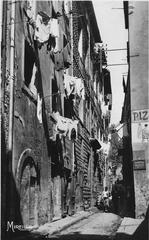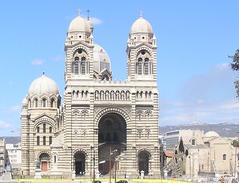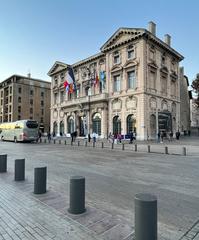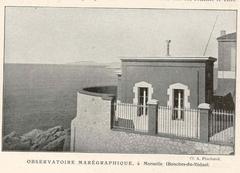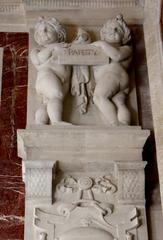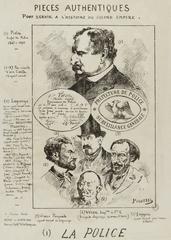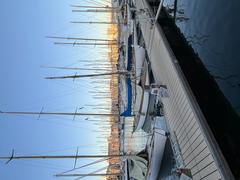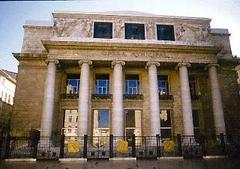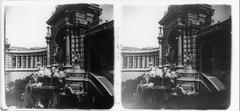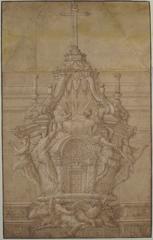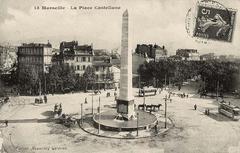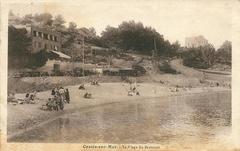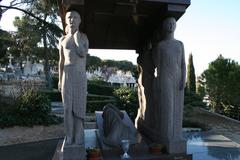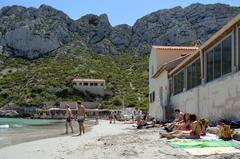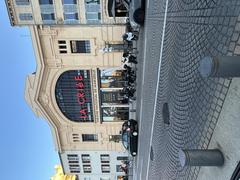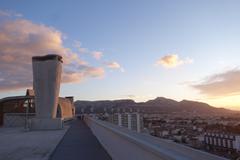
Complete Guide to Visiting Église Saint-Cannat, Marseille, France: Hours, Tickets, and Nearby Attractions
Date: 04/07/2025
Introduction
Église Saint-Cannat is a captivating historical and religious landmark in the heart of Marseille’s 1st arrondissement. Founded by the Dominican Order in the 16th century and named for Saint Canus Natus, a 5th-century bishop, this church offers visitors a compelling blend of architectural grandeur, artistic treasures, and vibrant urban history. Its evolution from Provençal Gothic to Baroque, its central location near the Old Port and Rue de la République, and its role as a living place of worship and cultural venue make it an essential stop for anyone exploring Marseille. This guide offers comprehensive information on visiting hours, entry, accessibility, artistic highlights, and nearby attractions to help you make the most of your visit (Visiting Église Saint-Cannat: Hours, Tickets & Marseille Historical Sites Guide; Église Saint-Cannat Marseille: Visiting Hours, Tickets, and Architectural Highlights; Église Saint-Cannat Visiting Hours, Tickets, and Guide to Marseille’s Historic Church).
Table of Contents
- History & Architectural Evolution
- Artistic and Cultural Significance
- Visitor Information
- Integration into Marseille’s Urban Fabric
- Frequently Asked Questions (FAQ)
- Conclusion
- References
History & Architectural Evolution
Origins and Foundation
Église Saint-Cannat was established at 4, rue des Prêcheurs by the Dominican Order, with construction starting in 1526 and dedication in 1619. Its foundation on Christian traditions is embodied in its dedication to Saint Canus Natus. The church’s construction spanned nearly a century, reflecting stylistic transitions from late Gothic Provençal features—such as pointed arches and ribbed vaults—to a Baroque facade completed in the 18th century.
Architectural Highlights
- Gothic Provençal Roots: The original layout features the verticality and stonework typical of the local Gothic style.
- Baroque Facade: Redesigned between 1739 and 1744 by Joseph Gérard, the facade displays Baroque elements such as pilasters, cornices, and elegant symmetry. Sculptures by Antoine Duparc and the Doric columns remain prominent features.
- Pipe Organ: The 1747 organ by Jean-Esprit Isnard, with its elaborate gilded case, is celebrated as a historic and musical masterpiece.
Later Developments
The church’s urban context transformed with the construction of Rue de la République in the 19th century, integrating Église Saint-Cannat into Marseille’s growing cityscape. Restoration efforts, including a major campaign completed in 2023, have preserved the roof, bell tower, and facade, safeguarding its legacy as a Monument Historique since 1926.
Artistic and Cultural Significance
Église Saint-Cannat is home to a distinguished collection of art and heritage objects:
- Paintings: Works by Michel Serre (“La Vierge à l’Enfant et le Purgatoire”, “La Purification de la Vierge”) and Pierre Parrocel (“Le Baptême du Christ”).
- Sculpture: Notably, François Carli’s statue of Saint Thérèse of Lisieux and a master altar attributed to the school of Puget.
- Ornamentation: The polychrome marble altar, ornate pulpit by Albert Duparc, and 18th-century confessionals enrich the church’s interior.
- Stained Glass: Max Ingrand’s 1950s windows illustrate scenes from Saint Canus Natus’s life, blending modern artistry with tradition.
These works not only enhance the spiritual ambiance but also highlight the church’s importance as a Marseille cultural hub.
Visitor Information
Visiting Hours
- General Hours: Open Tuesday to Sunday, 10:00 AM to 6:00 PM. Closed Mondays and on certain public holidays.
- Special Hours: Opening times may vary during religious services or special events. Always check official sources before planning your visit.
Tickets and Entry Fees
- Admission: Free for all visitors. Donations are appreciated to support restoration and maintenance.
Accessibility
- Physical Access: The church is wheelchair accessible via ramps at the main entrance. Some areas may have uneven flooring.
- Facilities: Accessible restrooms are available on-site.
Guided Tours & Events
- Guided Tours: Available weekends at 11:00 AM and 3:00 PM, offering in-depth insights into history, architecture, and art.
- Special Events: Concerts featuring the historic organ and other cultural events are held seasonally. Check the Marseille tourism website or parish announcements for current schedules.
Nearby Attractions
- Colbert Post Office: Notable for its architecture, adjacent to the church.
- Rue de la République: A bustling avenue ideal for shopping and dining.
- Old Port (Vieux-Port): The vibrant heart of Marseille, perfect for exploring markets and waterfront views.
- Jardin des Vestiges & Musée d’Histoire de Marseille: Easily accessible for those interested in the city’s ancient history.
Practical Tips
- Transport: Easily reached via metro (Line 1, Vieux-Port Hôtel de Ville or Colbert), bus, or tram. Public parking is available nearby, but public transport or walking is recommended due to limited spaces.
- Dress Code: Modest attire is required; shoulders and knees should be covered.
- Photography: Non-flash photography is allowed outside of services. Always check for signage or ask staff.
- Facilities: No on-site cloakroom or gift shop, but nearby cafés and shops offer refreshments and souvenirs.
Integration into Marseille’s Urban Fabric
Église Saint-Cannat’s central location reflects its enduring role in the city’s life. From serving as a spiritual home for Dominican friars and guilds to hosting modern Orthodox liturgies and concerts, the church is woven into the social, religious, and cultural tapestry of Marseille.
Frequently Asked Questions (FAQ)
What are Église Saint-Cannat’s visiting hours?
Tuesday–Sunday, 10:00 AM–6:00 PM; closed Mondays and select holidays.
Is there an entry fee?
Admission is free. Donations are welcome.
Are guided tours available?
Yes, guided tours are offered on weekends and during special events.
Is the church wheelchair accessible?
Yes, with ramps and accessible restrooms.
Can visitors take photos inside?
Photography (no flash) is generally allowed outside of religious services.
Are there nearby attractions?
Yes, including Rue de la République, Vieux-Port, and historic gardens and museums.
Conclusion
Église Saint-Cannat stands as a testament to Marseille’s rich religious, artistic, and civic heritage. Its stunning architecture, impressive artworks, and lively program of services and events make it a must-visit for art lovers, history buffs, and travelers seeking authentic cultural experiences. Plan your visit to include this remarkable church and enrich your exploration of Marseille’s historic city center. For up-to-date information, guided tours, and insider tips, consult the official Marseille tourism resources or download the Audiala app.
References and Further Reading
- Visiting Église Saint-Cannat: Hours, Tickets & Marseille Historical Sites Guide
- Église Saint-Cannat Marseille: Visiting Hours, Tickets, and Architectural Highlights
- Église Saint-Cannat Visiting Hours, Tickets, and Guide to Marseille’s Historic Church


